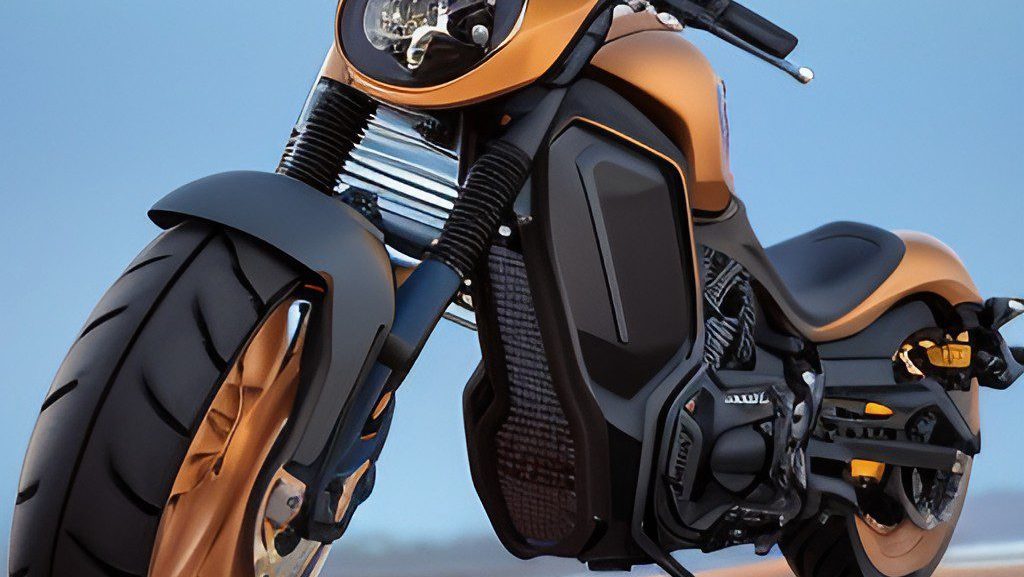Introduction
In an era where technology influences every aspect of our lives, the realm of cruiser motorcycles is not left behind. Today’s cruiser motorcycles offer a blend of comfort, performance, and technology, all wrapped into one. This article will take a closer look at the technological advancements that are shaping the future of cruiser motorcycles.
Advanced Braking Systems
Anti-lock Braking System (ABS)
Undoubtedly, one of the most pivotal advancements in motorcycle safety technology is the Anti-lock Braking System (ABS). ABS is an automated system that uses sensors to monitor the rotational speed of each wheel during braking. If the system detects an impending wheel lock – a situation where the wheel stops rotating and skids along the road surface – it modulates the brake pressure to that wheel. This modulation, which can occur several times per second, prevents wheel lock-up, thereby significantly reducing the risk of skidding. Consequently, this allows the rider to maintain steering control during emergency braking, even on slick surfaces. ABS technology not only enhances rider safety but also instills confidence, especially among novice riders, by providing a safer braking experience
Traction Control System
Another noteworthy advancement is the Traction Control System (TCS). Similar to ABS, TCS is an automated system that enhances rider safety, particularly on slippery surfaces. It constantly monitors the rotational speed of the motorcycle’s wheels. If the system detects excessive wheel spin – a situation where the rear wheel rotates significantly faster than the front wheel, indicating a loss of traction – it reduces engine power to that wheel until grip is regained. By preventing wheel spin, this technology ensures optimum grip and stability, thereby reducing the rider’s chances of losing control. As a result, TCS instills confidence in riders, particularly when riding under challenging weather conditions or on slippery surfaces.
Smart Riding Systems
GPS Navigation
Today’s modern cruiser motorcycles are often equipped with GPS navigation systems, transforming potentially intimidating long rides and unfamiliar routes into exhilarating experiences. These integrated systems provide real-time traffic updates, turn-by-turn directions, and points of interest along the route, all displayed on a user-friendly interface right on the motorcycle’s dashboard. With a GPS navigation system, riders can confidently explore new terrains knowing that they can easily navigate their way around. In essence, these systems not only enhance rider convenience but also contribute to safety by allowing riders to keep their focus on the road instead of worrying about directions.
AI-powered Riding Assist
AI-powered riding assist is indeed one of the revolutionary advancements in the realm of motorcycle technology. This intelligent feature employs machine learning algorithms that adapt to various riding parameters such as speed, throttle response, and suspension settings. The system constantly learns from the rider’s behavior, optimising these parameters to provide an enhanced riding experience. With AI-powered assist, the motorcycle can effectively understand and adjust to the rider’s style, providing a ride that is not only safer but also more personalized and comfortable. This underscores how artificial intelligence is transforming the motorcycle riding experience, heralding a new era in the field of cruiser motorcycles.
Efficient Electric Powertrains
Electric Cruiser Motorcycles
The advent of electric cruiser motorcycles is indeed a game-changer. With zero emissions and instant torque, electric cruisers provide a green and exhilarating alternative to traditional gasoline-powered bikes. They promise a thrilling ride without compromising the environment. The immediate power delivery from electric motors brings a new dimension to the riding experience, while the lack of exhaust emissions contributes to a cleaner and greener environment. Furthermore, the silence of the electric powertrain adds a unique element to cruiser biking, allowing riders to enjoy the natural sounds of their surroundings. As technology progresses, the performance, range, and affordability of electric cruisers continue to improve, making them an increasingly viable option for riders seeking an eco-friendly yet exciting biking experience.
Battery Technology
As the demand for electric motorcycles continues to rise, substantial developments have been made in Battery Management Systems (BMS). The BMS serves as the brain of the battery pack, regulating and controlling the battery’s performance for optimal use. It not only manages the charging and discharging process to enhance longevity but also monitors the battery’s health to ensure safety. By maintaining the battery within its optimum operating conditions, the BMS significantly contributes to the reliability and efficiency of electric motorcycles. These advancements in BMS technology are indeed paving the way for more sustainable and efficient electric transportation.
Conclusion
The future of cruiser motorcycles looks promising, thanks to these technological advancements. As technology continues to evolve, we can expect to see even more innovations that will redefine the motorcycle riding experience. From advanced safety features to electric powertrains, the technological revolution in cruiser motorcycles is just beginning.

